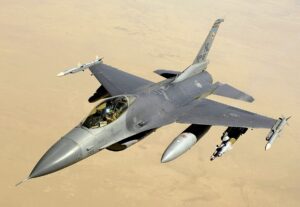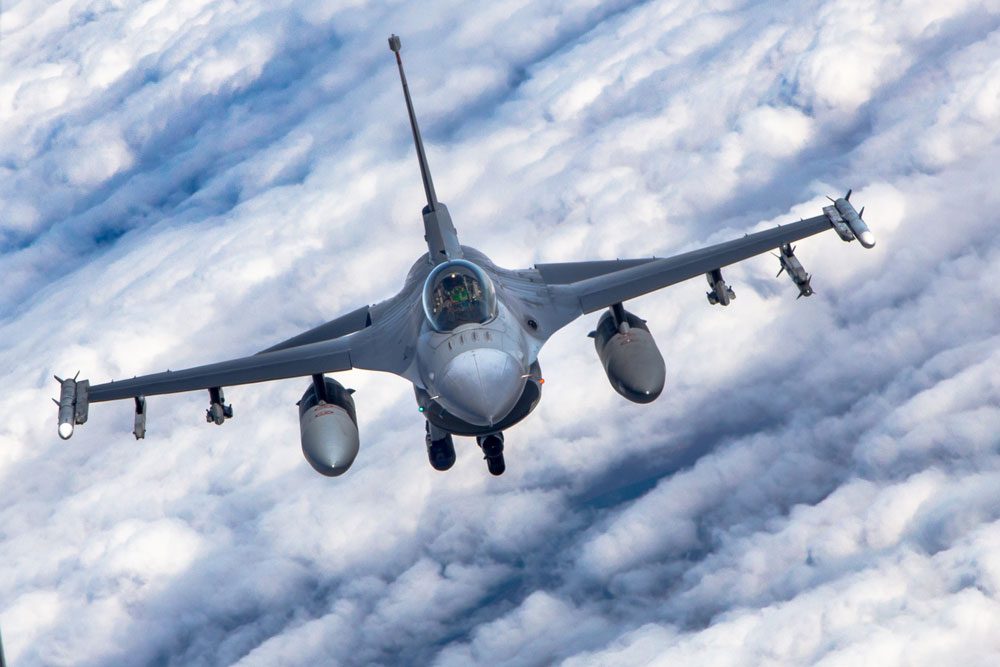Strategic Calculations: F-16s in Ukraine and Their Significance for Regional Security
In a move that has intensified an already tense situation, the United States recently granted approval for the supply of F-16 fighter jets to Ukraine, a decision with far-reaching implications for the ongoing conflict between Ukraine and Russia. This strategic maneuver raises questions about the geopolitical landscape, the balance of power, and the potential consequences of such military assistance.
The F-16 Approval: A Strategic Shift
The approval of F-16 fighter jets to Ukraine represents a significant strategic shift in the dynamics of the Russo-Ukrainian conflict. The F-16, a versatile and advanced multirole fighter aircraft, would provide Ukraine with enhanced air capabilities that could impact the ongoing military struggle against Russia.
Geopolitical Implications
The decision to supply F-16s to Ukraine carries several geopolitical implications that resonate not only in the region but also on the global stage:
- Ukraine’s Strengthened Defense: The F-16s’ advanced technology and capabilities could bolster Ukraine’s defense capabilities, allowing it to better defend its airspace and potentially deter further Russian aggression.
- Message of Support: The supply of F-16s sends a clear message of support from the United States to Ukraine, signaling a commitment to Ukraine’s sovereignty and territorial integrity in the face of Russian expansionism.
- Russian Response: Russia is likely to view the supply of F-16s as a provocative act and may respond with heightened military actions or increased support for separatist forces in eastern Ukraine, potentially escalating the conflict.

Impact on the Ongoing War
The introduction of F-16 fighter jets into the conflict could have several significant impacts on the ongoing war:
- Air Superiority: The F-16s’ advanced avionics, weapons systems, and agility would give Ukraine a stronger advantage in air-to-air combat, potentially limiting Russia’s aerial dominance and offering Ukraine better air superiority.
- Ground Support: The F-16s’ precision-guided munitions and ground attack capabilities would enable Ukrainian forces to more effectively target Russian military assets and support separatist-held territories, potentially shifting the balance on the ground.
- Psychological Impact: The introduction of F-16s could have a psychological impact on both Ukrainian and Russian forces. For Ukraine, it could boost morale and demonstrate tangible international support. For Russia, it could lead to a reevaluation of their strategy.
Escalation Risks and Diplomatic Efforts
While the supply of F-16s could enhance Ukraine’s defense capabilities, it also carries risks:
- Escalation Spiral: The deployment of F-16s could lead to a dangerous escalation spiral, prompting Russia to respond with more significant military actions or additional support for separatist forces.
- Diplomatic Channels: International diplomatic efforts must be intensified to prevent the situation from spiraling out of control. Dialogue and negotiations remain crucial to achieving a peaceful resolution.
- Broader Implications: The supply of F-16s to Ukraine has broader implications for US-Russia relations, NATO-Russia dynamics, and the security landscape in Eastern Europe.
Regional and Global Ripple Effects
The decision to supply F-16s to Ukraine also has broader regional and global implications:
- NATO-Russia Relations: The move could strain relations between NATO and Russia even further. Russia sees NATO’s expansion in its neighborhood as a security threat, and the introduction of advanced military hardware to Ukraine could deepen this perception.
- European Security: The conflict’s escalation could impact the security situation in Europe, influencing neighboring countries’ defense postures and prompting a reassessment of security arrangements across the continent.
- International Norms: The ongoing conflict raises questions about the efficacy of international norms and agreements in preventing military conflicts and territorial disputes. The situation serves as a reminder of the need for a collective commitment to upholding international law and diplomatic solutions.
Diplomacy and De-escalation
Amidst the intensifying conflict, diplomatic efforts must be prioritized to prevent the situation from spiraling into an all-out war. Key steps include:
- Ceasefire and Negotiations: Both sides should commit to a ceasefire and engage in meaningful negotiations facilitated by international mediators. A peaceful resolution remains the most viable way to end the conflict and prevent further loss of life.
- Dialogue with All Stakeholders: The international community, including major powers like the United States, Russia, and European countries, should engage in sustained dialogue to find a comprehensive solution that respects Ukraine’s sovereignty and addresses Russia’s security concerns.
- Humanitarian Aid: The focus should extend beyond military strategies to address the immediate needs of civilians. Humanitarian aid efforts should be intensified to provide relief to those affected by the conflict.
Conclusion
The decision by the United States to approve the supply of F-16 fighter jets to Ukraine represents a substantial shift in the Russo-Ukrainian conflict. While the F-16s could bolster Ukraine’s defense capabilities and signal international support, the move also carries inherent risks of further escalation and destabilization. As the situation unfolds, it is imperative for all parties involved to exercise restraint, prioritize diplomatic solutions, and seek avenues for de-escalation to prevent a worsening of the conflict and to pave the way for a peaceful resolution.
